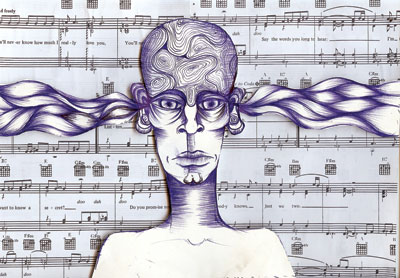All Nonfiction
- Bullying
- Books
- Academic
- Author Interviews
- Celebrity interviews
- College Articles
- College Essays
- Educator of the Year
- Heroes
- Interviews
- Memoir
- Personal Experience
- Sports
- Travel & Culture
All Opinions
- Bullying
- Current Events / Politics
- Discrimination
- Drugs / Alcohol / Smoking
- Entertainment / Celebrities
- Environment
- Love / Relationships
- Movies / Music / TV
- Pop Culture / Trends
- School / College
- Social Issues / Civics
- Spirituality / Religion
- Sports / Hobbies
All Hot Topics
- Bullying
- Community Service
- Environment
- Health
- Letters to the Editor
- Pride & Prejudice
- What Matters
- Back
Summer Guide
- Program Links
- Program Reviews
- Back
College Guide
- College Links
- College Reviews
- College Essays
- College Articles
- Back
“Hail! Hail! Rock-n-roll!”
What happens when you throw in hot sexually charged musical icons like Elvis Presley and Chuck Berry among the white cookie-cutter conformity of the 1950s? In a time where the U.S.’s highest goals were to create the perfect American idealist suburbia, mass media like television opened up a whole new world for teenagers, introducing them to new labels like Ray Charles, Etta James, the Drifters, Chuck Berry, etc. Thus, this accomplished in opening the world of black music to the white teenage demographic, which instantly sparked reaction among the racist and conservative older community. Suddenly, teenagers weren’t loaded down with the responsibilities and expectations of their parents in the previous war years, and were living in a post-war economic baby boom that allowed for them to have new modes of transportations, like the Cadillac, and new fashion trends, like makeup and brassieres. The rocketing popularity of Rock and Roll, which was a black sexual euphemism at the time, suddenly appealed to and symbolized the youth of America, connecting to them with lyrics about sexual expression, emotional development, and teenage rebellion. In a time of one of America’s heightened segregated periods, rock and roll music became one of the greatest equalizers, as both white and black teenagers listened to their musical idols, even de-segregating concerts in mid-performance, and sparking mass controversy. Rock and Roll satisfied youth’s hunger for “music with a beat” combining both musical virtuosity and teenager’s emergent independence and sexual liberation from traditionalist parents in the 1950s.

Similar Articles
JOIN THE DISCUSSION
This article has 0 comments.
